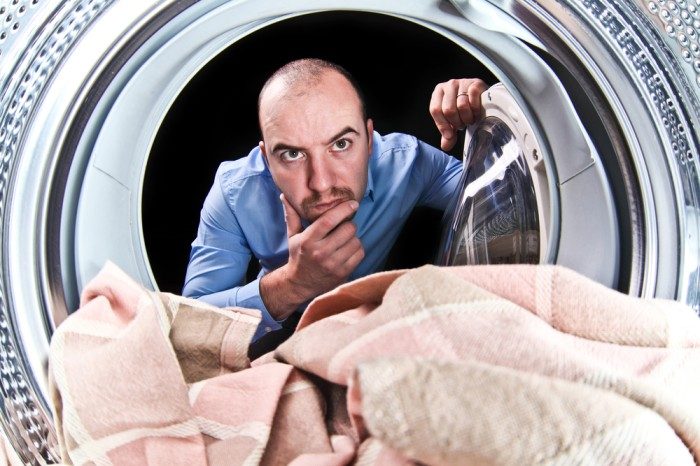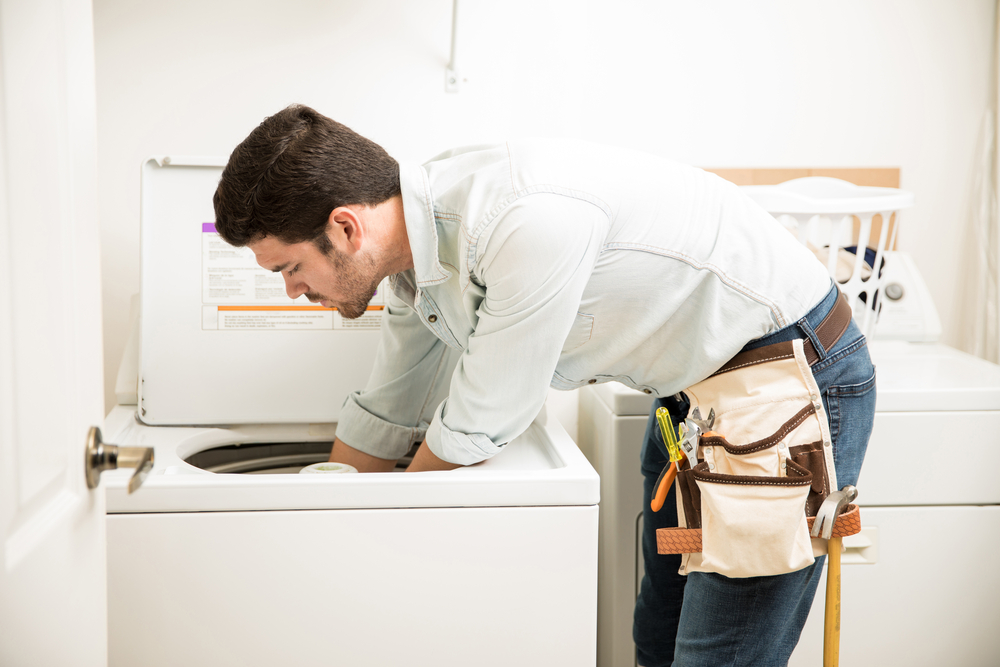A reliable washer is an essential appliance in every household and we take it for granted that when we need it, it works. However, in the fast-paced rhythm of modern life, a malfunctioning washer can disrupt the seamless flow of daily tasks.
We understand the importance of a reliable washing machine and the frustrations it can bring, so our troubleshooting guide for common washer issues aims to navigate you through the most common washer issues, potential causes and what you can do to resolve the issue.
Common Washer Issues
Leaks
Leaks are one of the most common issues with washing machines and can cause a lot of headaches. Follow these steps to identify and resolve the issue:
Check for visible leaks:
- Inspect the area around the washer for any water puddles.
- Examine hoses and connections for signs of wear or damage.
Inspect hoses and connections:
- Tighten loose connections.
- Replace damaged hoses.
Strange Noises
Unusual sounds during the wash cycle can indicate underlying problems. Here’s how to troubleshoot:
Identify the type of noise:
- Grinding, thumping, or squealing noises may point to specific issues.
- Listen closely to pinpoint the source of the sound.
Check for loose parts:
- Examine the drum and agitator for loose items.
- Tighten or replace any loose parts.
Error Codes
Washer error codes can be cryptic, but understanding them is crucial. Decode common error codes with these steps:
Refer to the user manual:
- Locate your washer’s user manual for a list of error codes.
- Understand the meaning of each code.
Reset the machine:
- Power off the washer, wait for a few minutes, and restart.
- Some errors may be resolved with a simple reset.
Troubleshooting Steps
Leaks
Address leaks promptly to prevent water damage and maintain your washer’s longevity:
Inspect and clean the door seal:
- Check for debris or mold around the door seal.
- Wipe the seal with a damp cloth regularly.
Examine the detergent dispenser:
- Clean any detergent residue or mold in the dispenser.
- Use a mild cleaning solution for stubborn buildup.

Strange Noises
Silence the unusual symphony emanating from your washer with these troubleshooting steps:
Balance the load:
- Uneven loads can cause excessive noise.
- Ensure clothes are distributed evenly in the drum.
Inspect the drum for foreign objects:
- Coins, buttons, or small items can create noise.
- Remove any foreign objects caught in the drum.
Error Codes
Decode error messages and take appropriate action to restore your washer’s functionality:
Consult the user manual:
- Follow the manual’s guide for interpreting error codes.
- Some codes may indicate a specific part replacement.
Contact customer support:
- If troubleshooting doesn’t resolve the issue, contact the manufacturer’s customer support for assistance.
Preventive Maintenance Tips
Maintain a smoothly running washer with these preventive measures:
Regular Cleaning:
- Clean the drum and gasket monthly to prevent mold growth.
- Wipe down the exterior to remove detergent residue.
Proper Loading:
- Avoid overloading the washer to prevent imbalance and noise.
- Use a high-efficiency detergent to prevent excess suds.
Using the Right Detergent:
- Follow manufacturer recommendations for detergent type and quantity.
- Use high-efficiency (HE) detergent for front-load washers.
In conclusion, a well-maintained washer is the key to hassle-free laundry days. By addressing leaks, strange noises, and error codes promptly, you not only prevent inconvenience but also extend the life of your appliance. Remember, a stitch in time saves nine, and the same applies to your washer.
Regular preventive measures, such as cleaning the drum and maintaining proper loading practices, are the unsung heroes in the battle against common washer issues. Incorporating these into your routine ensures the longevity of your appliance and keeps it operating at peak efficiency.
As technology advances, washing machines become more sophisticated, incorporating smart features and advanced diagnostics. However, the basics of troubleshooting and maintenance remain crucial. Whether you’re dealing with a traditional top-load washer or a state-of-the-art front-load model, the fundamentals outlined in this guide are universally applicable.
For those moments when you’re stumped by an error code or an unusual noise, the FAQs provide quick answers. Don’t hesitate to contact us for immediate guidance. And remember, when in doubt, reaching out to customer support can save you time and effort.
In the ever-evolving landscape of household appliances, a well-informed approach to washer care ensures that you get the most out of your investment. So, roll up your sleeves, dive into troubleshooting when needed, and let your washer continue to serve you faithfully.
Your laundry routine deserves the reliability and efficiency that a well-maintained washer provides. Happy washing!
FAQs About Troubleshooting Common Washer Issues
Monthly cleaning is recommended to prevent mold and maintain optimal performance.
Refer to your washer’s user manual for a detailed list of error codes and their meanings.
Simple issues like loose connections can be DIY, but for major leaks, it’s advisable to seek professional help.

